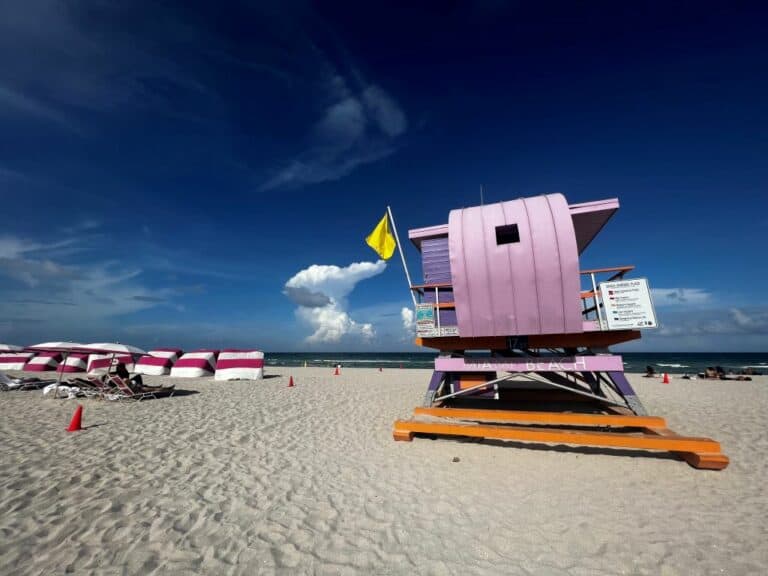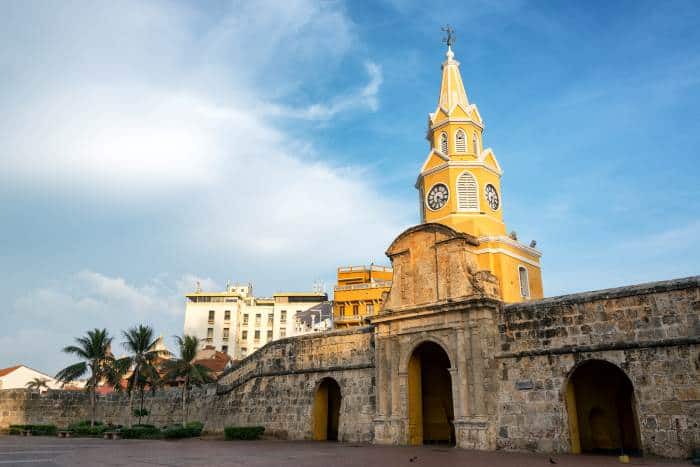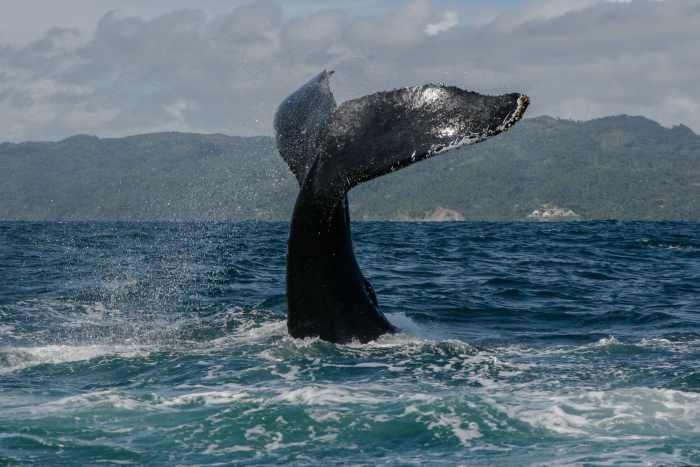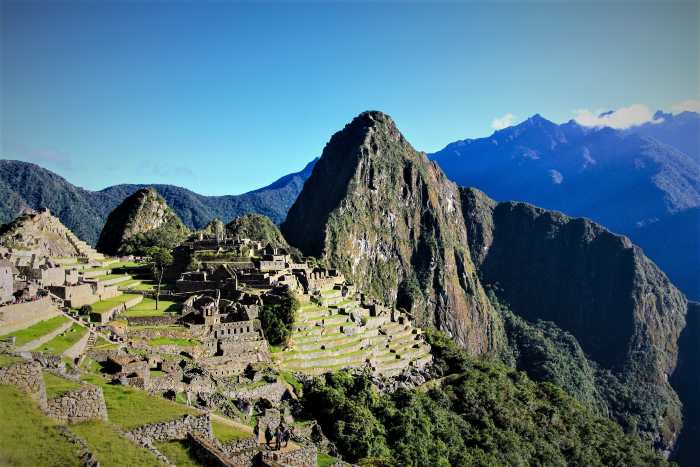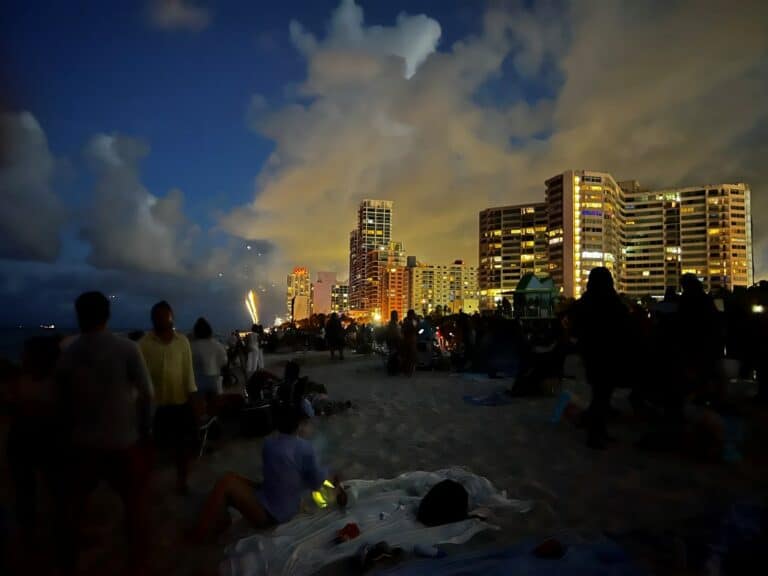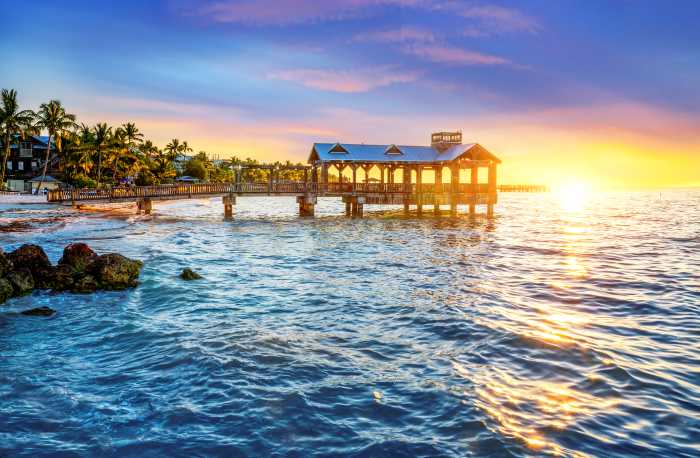Trinidad is a beautiful colonial town on Cuba’s southern coast, in Sancti Spiritus Province. As one of the island’s best-kept colonial towns, is Trinidad Cuba worth visiting?
I’m glad you asked! After traveling to Cuba regularly for five years and extensively traveling the island, I think I can help you with that. The short answer is YES, Trinidad is worth visiting.
In fact, you do not want to miss out on Trinidad on the southern shores of Cuba. I have visited several times in the last few years, and I love spending time in this historic and charming town.
Trinidad was founded back in the 16th Century by the Spanish conquistadors and flourished in the colonial era as it became a center for sugar production and trade. For a while, Trinidad was, in fact, the wealthiest city in Cuba!

Check Out My Vlog From Trinidad!
The Museum Of Cuba: Is Trinidad Cuba Worth Visiting?
Trinidad city lies in the terrain like a low, colorful coastal jewel, with one or two-story houses, churches, little towers, cobblestoned streets, and beautiful parks, plazas, and squares.
The Plaza Mayor, the main square of Trinidad by the historic city, is both a charming square and an open-air museum of Spanish Colonial architecture.
You can sit down for an outdoor coffee or just take a seat on the wide stone stairs at the plaza, which is surrounded by flowers.
Only a few square blocks in size, the historic plaza area is also cobblestoned, surrounded by houses in the typical pastel colors with wrought-iron grilles covering doors and windows.
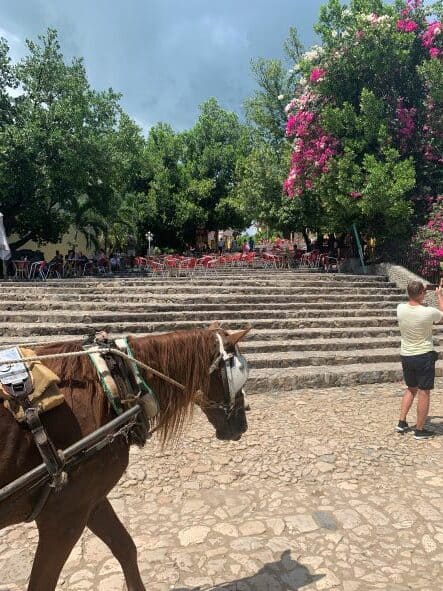
Colonial-era buildings such as the Santísima Trinidad Cathedral, Holy Trinidad Cathedral, and Convento de San Francisco are also around the Plaza Mayor, as well as the Municipal History Museum.
Apart from the main square, you can happily get lost in Trinidad’s narrow maze of streets, which all look a bit unmanageable at first glance.
In addition to experiencing the historic city center, Trinidad has a lot of other fun activities and worthwhile sights to offer the exploring traveler.
Why Was Trinidad Stuck In Time?

Trinidad is the best-preserved colonial town in Cuba.
In the 19th century, competition from other Caribbean sugar states became too tough. As the sugar capital of Cuba, Trinidad suddenly became a quiet backwater and slowly slipped away into oblivion and stagnation.
The city’s architecture froze in time, missing the modernization that occurred in other areas of Cuba. Despite all the historical relics, Trinidad today is a vibrant city with lots of life, restaurants, music, bars, and services.
Not to mention the beautiful Ancon Beach, which is only a ten-minute taxi ride away from the city center!
Interesting Things To Do In Trinidad
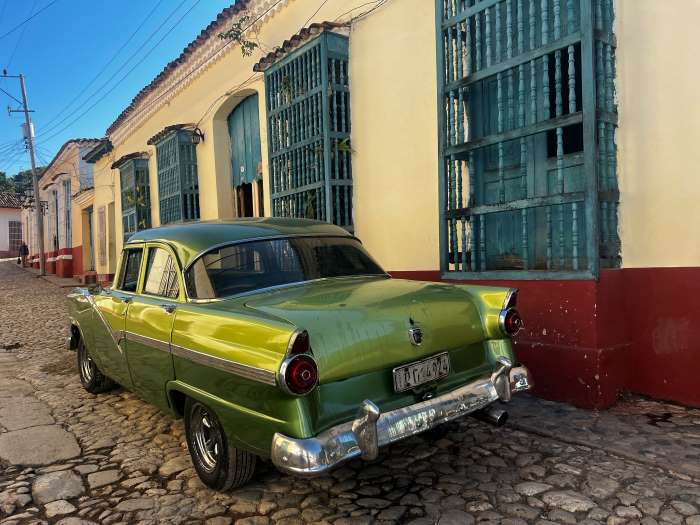
Trinidad offers amazing nature experiences, as well as food, museums, history, beautiful beaches, water activities, and, of course, music!
When visiting, you could start by spending a few hours just walking around in the historic streets of the city. Take in the ambiance and vibe, and study all the details in architecture and art.
Also read: 19+ Unique Things To Do In Trinidad Cuba From An Expert
Trinidad Museums
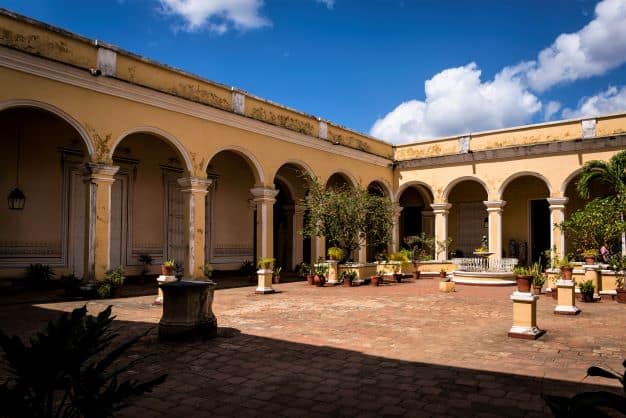
Even though the city of Trinidad is called “the Museum of Cuba” as a whole, it has a wide variety of actual museums covering different topics, like history, art, and architecture, for tourists to explore.
The Romance Museum
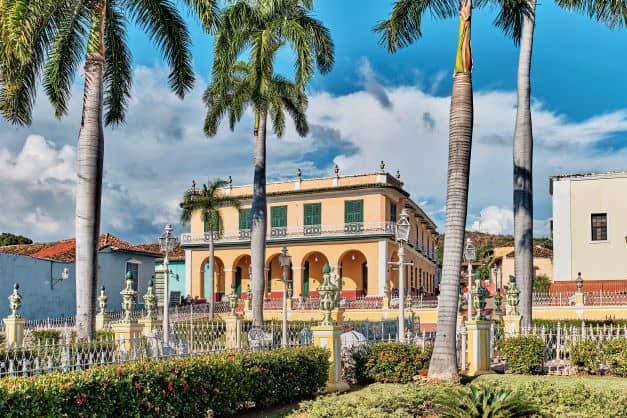
The Romance Museum is located in the heart of Trinidad city center in an old mansion called the Brunet Palace. Count Brunet was a noble Cuban Creole who founded the Brunet Theater and owned the Brunet Palace.
The palace was built in the 1740s and is special because of its Andalucian courtyard, which is characterized by a mix of Mudejar and neoclassical styles.
The palace contains 14 rooms, where a variety of decorative artwork is exhibited. Original details like tiled floors and balustrades are still present.
There is silverware, china, old furniture, silver-smithing, lingerie, and other luxury items of the 19th Century on display, mostly things that belonged to the original family.
The Museum Of Municipal History
Museo de Historia Municipal tells the story of Trinidad from its foundation by Diego Velasquez in 1514, exhibiting important items from the period.
The building is a palace that the Borrell family originally built as part of the Sugar Aristocracy in Trinidad centuries ago. The house later became known as the Palace of Cantero.
In 1960, a little while after the revolution, the state nationalized the building’s ownership, and in the 1970s, restoration started to make it into the museum that it is today.
Some rooms show the military side of Trinidad’s history, including the city’s fortification and defense. Other rooms are dedicated to the sugar trade, economic development, and the impact of the slave trade.
Trinidad Architecture Museum
The Museo de Arquitectura Colonial, or Colonial Architecture Museum, is a great place for anyone interested in the details.
You can see the colonial-style architecture, building techniques, and decor of the Spanish Empire era. The museum is located in two 1738-built 18th-century mansions that were once the home of the wealthy Sanchez Iznaga family.
Dedicated to the characterful architecture of colonial Trinidad, you can see exhibits of typical colonial architectural items and decorations like doors, handles, locks, windows, and grills.
The museum also organizes guided tours through the historic streets of Trinidad.
Also read: 4 Best Casa Particular Trinidad Cuba By A Local
Visit Parque Natural Topes De Collantes
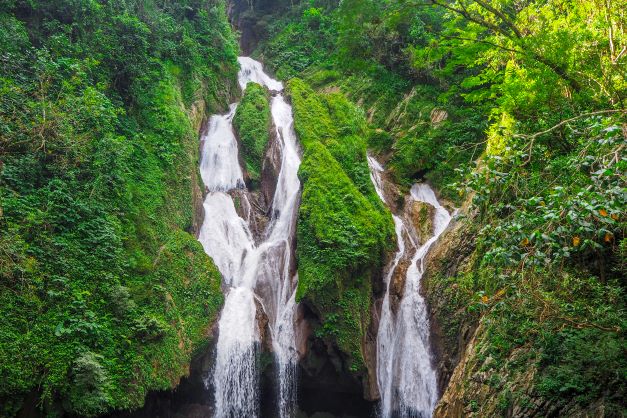
There are several smaller and larger magnificent freshwater springs hidden in the hills around Trinidad. In some places, you can hike on lush green trails and swim through little waterfalls in the greenish-blue water to cool down.
One of these is the Parque Natural Topes de Collantes.
This is a nature reserve park situated in the Escambray Mountain Range in Cuba, around 15 kilometers, or 20 minutes, from Trinidad.
In the park, there are caves, rivers, falls, grottos, canyons, and natural pools with crystal-clear water. You can easily take a day trip to this nature reserve park when you are in Trinidad or Sancti Spiritus Province, or you can stay for longer.
Trinidad And The Valley De Los Ingenios

Valle de Los Ingenios, or Valley of the Sugar Mills in English, consists of three interconnected valleys about 12 kilometers outside Trinidad.
From the late 18th century until the late 19th century, the valleys of San Luis, Santa Rosa, and Meyer were the main centers for sugar production in the area. At the peak of the sugar era in Cuba, more than fifty sugar cane mills ran in the three valleys.
Together, they were run by more than 30,000 enslaved Africans, working in the mills and on the sugar cane plantations around the area.
At Manaca Iznaga, the owner’s mansion, a bell tower, and some of the barracones, the original slave barracks, are still there. The mansion has been converted into a restaurant, where you can sense the historic ambiance from the colonial era.
The Iznagas Bell Tower, once the tallest structure in Cuba, announced the beginning and the end of the long and hard workday for the slaves.
In 1988, Valle de Los Ingenios was declared a World Heritage Site by UNESCO because of the important history it displays about the early sugar trade industry in Cuba.
Cerro De Vigia Hill
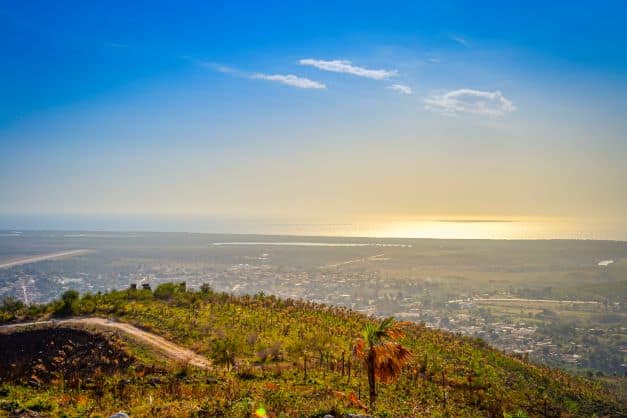
If you like hiking, a walk to the Cerro de Vigia hill can be a sporty but not too hard day trip. From the top, you have a magnificent view over Trinidad city as well as the Valle de Los Ingenios and the southern coastline.
You start by walking from Trinidad up Simón Bolívar between the Museo Romántico and the Iglesia Parroquial. This will lead you to the remains of an 18th-century refuge that was part of a former Spanish military hospital.
From there, you continue walking for around half an hour up the hill before you reach an area with a tall radio tower. That’s it. Take a breath, turn around, and enjoy the view!
Trinidad Tours | Why Not Explore Horseback Riding!

If you enjoy horseback riding (or just want to try it), this is a perfect slow way to do a Trinidad tour and explore the nature around Trinidad.
Several Trinidad tour operators and local adventure companies offer horseback riding tours, often a day trip like this that will include several interesting activities.
You will ride along red dirt paths visiting tobacco farms, sample local rum, test churning sugar canes, and extract sugar water that a countryside bartender will magically turn into a drink for you.
Normally, a day trip like this includes a stop at a small village restaurant, where you can enjoy a local lunch before you head back to the city in the afternoon.
Scuba Diving In Trinidad
Being a coastal town close to a stunning white beach, there are, of course, options for wonderful underwater adventures with scuba diving In Trinidad.
I have been scuba diving at Punta Perdiz twice, close to Playa Giron and the Bay of Pigs. These are great dive sites. The furthest is about a two-and-a-half-drive, which is doable on a day trip from Trinidad.
In Trinidad, you find several scuba diving centers, like the Cayo Blanco Scuba Diving Center on the Ancon Peninsula.
If you are not already a certified diver, you can also take a scuba dive course, such as the ACUC International Certification Dive Course departing from Trinidad.
Take A Salsa Class
You don’t have to be in Havana to experience social dancing or a fun salsa class! In Trinidad, several places offer classes of salsa to visitors (and locals), including the Cuban Salsa Casino.
You can also explore other Cuban dance styles, such as the mambo and rhumba, or even more exotic dances, like the bachata and kizomba.
The Cubans have made many of these dances their own, mixing and merging the styles into something very typical Cuban!
Dance schools in Trinidad offer classes if you want to learn, or you can go out to Casa de la Musica, and someone will ask you to dance.
Best Beaches In Trinidad
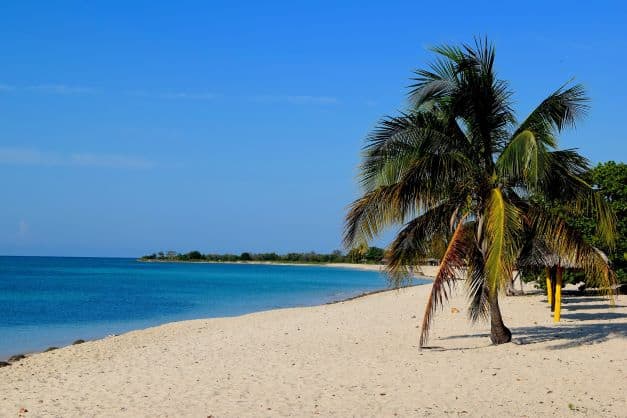
If you love lounging on a beach under a parasol, the Trinidad coastline offers exactly that for sunbathers and sea lovers.
The best beaches in Trinidad are Playa Ancon and Playa Maria Alguilar, both stunning locations where you can see the white sands and the light blue ocean.
From Ancon Beach in Trinidad, you will find catamarans lounging in the small, ready-to-take travelers on a snorkeling adventure. For an hour, they will take you to coral reefs a mile or so off the coast, where you can enjoy the colorful life on the reef before safely returning you to shore.
As there are not really a lot of beach bars or restaurants connected to Cuban beaches, so bring what you want to eat and drink for the day.
Cubans love to hang out on the beach; you will probably meet large families with three generations enjoying the chill life BBQ’ing (especially on the weekends) while listening to salsa music on their subwoofers.
Nightlife In Trinidad
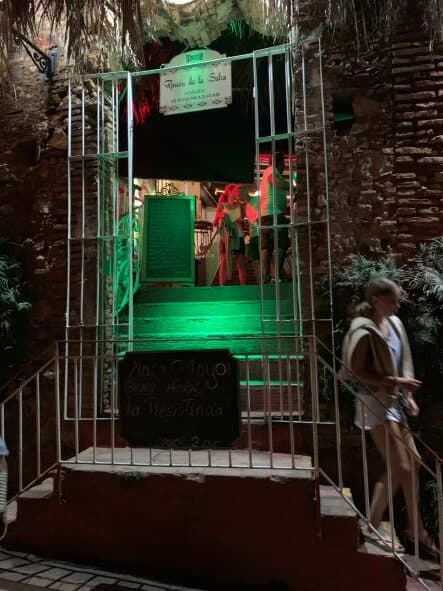
Although Trinidad was a sleeping city for a long time, today, there is a variety of nightlife options to explore.
Trinidad’s nightlife comprises different culinary experiences, clubs, little bars, and not to mention the Casa de la Musica and Casa de la Trova!
Nowhere in Cuba is the African influence more evident than in Trinidad restaurants, so you can easily explore the African and Latin cultures with your stomach.
The town has a culinary scene featuring delicious traditional Cuban and Creole food, which is more diverse than many of the restaurants on the rest of the island.
Casa De La Musica

Casa de la Musica is one of Trinidad’s most popular tourist attractions. It is “always” open but really comes to life when the sun goes down.
The casa itself comprises a large colonial-style house built in the 18th Century. Its main objective is to promote Cuban music, record it, and commercialize it to get it out into the world. But it is also a hub for night owls and party animals.
Here, you will find live Cuban music and visitors from all around the world. Locals and tourists alike flock to this area to dance, socialize, have a drink, and enjoy the nights and live bands.
As the bands play in the open air, you can just follow the crowd and the sound of music up the stairs to get there.
From some of the upper levels, you will have a breathtaking view of the city, the coastline, and the landscape of the Ancon peninsula.
Disco Ayala Or La Cueva In Trinidad

About a ten-minute walk outside (uphill) the city center is a club that is a little out of the ordinary. Disco Ayala, also called La Cueva Nightclub, is located far below the surface in a natural cave complex!
This club’s entrance is on the top of a hill. When you enter the door, you immediately start descending a rugged, winding stone stairway into the mountain’s core.
As you descend, the music gets louder, and the natural cave walls and ceilings are decorated with colorful lights and stalactites.
La Cueva is not a place that plays typical Cuban dance music.
Here, you will experience a standard clubbing evening with lots of reggaeton and, of course, Latin rhythms, as well as songs that were normally popular in the West a few years back.
If you like the clubbing scene, it is worth a visit, especially because of the special surroundings. The interior is a little rough, though, so the chicas may especially want to avoid the pointiest stilettos in this particular place!
Where To Stay In Trinidad
There are over 1,000 casa particulares in Trinidad, so there are plenty of places to stay. You can identify a casa particular by a small white sign outside the door with a little blue anchor.
What Is A Casa Particular?
A casa particular is a privately owned home rented out by a Cuban family, where you can live like a Cuban, closer to the real Cuba!
If you love not planning anything, you can find a casa particular after arriving in Trinidad. However, if you feel calmer by booking your accommodation beforehand, you can find casas, hostels, and hotels on Airbnb, hotels.com, and booking.com.
Remember that without a VPN installed, you will not be able to make these bookings when you are already in Cuba!
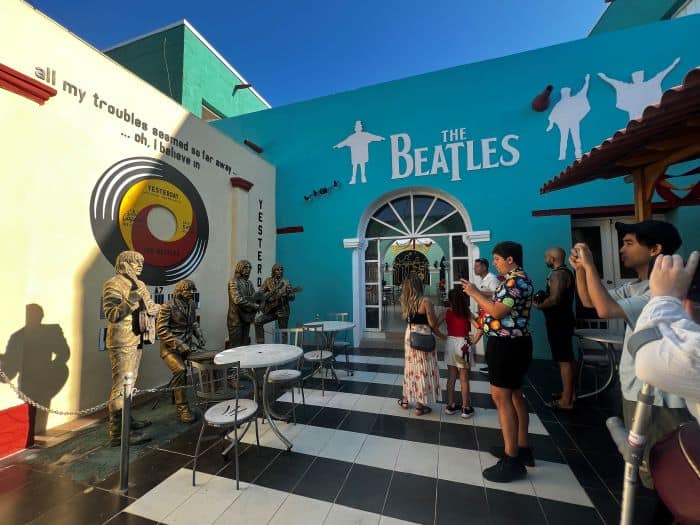
Getting To Trinidad And Around
There is a small airport outside Trinidad called Alberto Delgado Airport, but it is for domestic flights only and, according to online information, has only “unscheduled flights.”
To get around the western part of the island of Cuba, the best way to travel is by bus, taxi privado or collectivo, or a rental car from Varadero or Havana.
It can be a challenge getting gas in Cuba, so booking a rental car can be a risky business. If something happens to your rental en route, getting help is not necessarily easy. Any mishaps requiring repair and spare parts may ruin your holiday (and your budget).
Taking a regional bus like Viazul is cheap and easy, and it is also very comfortable.
Check out companies like Viazul or Cubanacan for all destinations. Taxi collectivo, a shared taxi, is probably the best compromise option.

A collectivo will come to pick you up at your hotel or casa, and drive around picking up all the other passengers as well.
When it’s on its way, it will drive directly to your destination and drop everyone off at their new accommodation. The price is decent, and it does not take too long. You can easily book a collectivo through your hotel or the hosts at your casa.
The fastest, easiest and most expensive way is a taxi privado. It picks you up, drives directly, and drops you off, but the convenience costs a little extra.
Also, if anything happens to the car, it is not your responsibility (unlike if you rent a car, this is Cuba), which is a clear advantage.
With the standard of the Cuban car park, anything can happen, so be prepared for breakdowns and delays in either transport option you choose.

The History Of Trinidad Cuba

The founder of Trinidad, Velázquez, was an explorer or a conquistador, depending on your point of view. He sailed from Spain on Columbus’s second voyage in 1493, undoubtedly an adventurer, at least!
Velázquez went on to become the first Spanish governor of Cuba..
He was entrusted with the conquest of the island by Columbus’s son Diego and is also the original founder of several other cities in Cuba as well as a key person in Spanish matters throughout the Caribbean.
In Trinidad, Velázquez was largely responsible for growing the sugar industry, as he was instrumental in the capture and importation of enslaved Africans.
Cuba’s strategic location and excellent sugarcane growing conditions made it “the perfect match” for a prosperous colonial Spanish empire.
Sugar cane was at the heart of Trinidad’s prosperity from the start, helping this rather small village to quickly grow into a wealthy town.
The nearby Valle de Los Ingenios was the hub of sugar cane production at this time. This was where the town started evolving, and Trinidad’s growing wealth was exceptional.
By the middle of the 1700s, the European demand for sugar reached a frenzied peak, which created a nobility of sugar in the city. The sugar barons became insanely rich, building luxurious manors in Trinidad, as well as large estates in the countryside.
Enslaved Africans were imported by the thousand to work the sugar plantations.
The golden-gilded history of Trinidad was a fairly short-lived chapter, however. Competition to export sugar to other parts of the Caribbean was intense and eventually stole much of Cuba’s dominance.
Frequent slave uprisings on the plantations, coupled with a general wave of struggles for independence across the Caribbean, led to the downfall of the town’s sugar industry.
Trinidad Cuba Fell Asleep
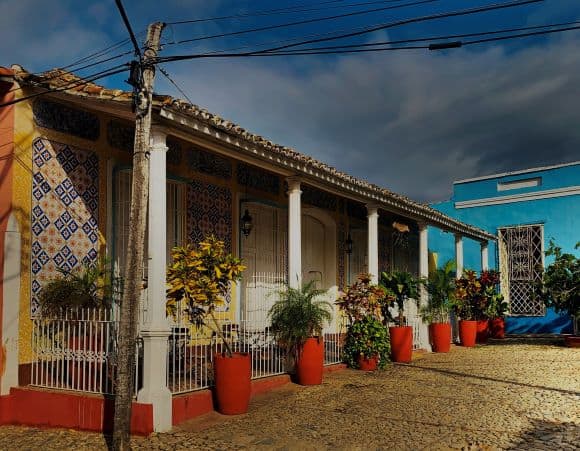
As the trade finally vanished, Trinidad became a sleeping, unimportant city. It was this collapse of Trinidad’s economy and halt in development that caused this magnificent colonial town to freeze in time.
By the 1860s, the bottom completely dropped out of the global sugar market. Trinidad’s economy, which was entirely dependent on sugar, collapsed.
It slipped away into obscurity, and the history of Trinidad entered an empty period for decades.
When modernization began to sweep through Cuba, Trinidad was left behind as an obsolete relic of another time.
This allowed it to escape modernization in the early 20th century, which likely would have ruined its pristine historic atmosphere.
Even before the revolutionary movement took over Cuba, the government realized the historic value and beauty of Trinidad. It was declared off-limits to development as far back as the 1950s.
The guerilla fight against Fidel Castro continued from the mountains surrounding Trinidad for a few years after the revolution, in the period from 1959 to 1965.
You can learn about that part of history at the museum Convento de San Fransisco at Plaza Mayor.
Today, Trinidad is known as the Museum of Cuba, a treasure of architecture and ambiance unparalleled in the country.
Travelers from both Cuba and abroad flock to the Plaza Mayor at the center of the town every year to experience its cobblestone streets lined with colonial buildings and historic monuments.
Through its museums and landmarks, the rich heritage of Trinidad’s sugary past is laid out everywhere you look.
Facts About Trinidad
Trinidad was founded on December 23, 1514, by a Spanish man named Diego Velázquez de Cuéllar, who was friends with Christopher Columbus and his explorer son.
It was first named Villa de la Santísima Trinidad, the town of the Holy Trinidad. 507 years after its foundation, the city is referred to as “the Museum of Cuba.”
Its architecture is so well preserved that it was declared a UNESCO World Heritage Site in 1988.
The houses, streets, and details are like a historical snapshot of a colonial town that fell off the modernization wagon when the sugar trade vanished.
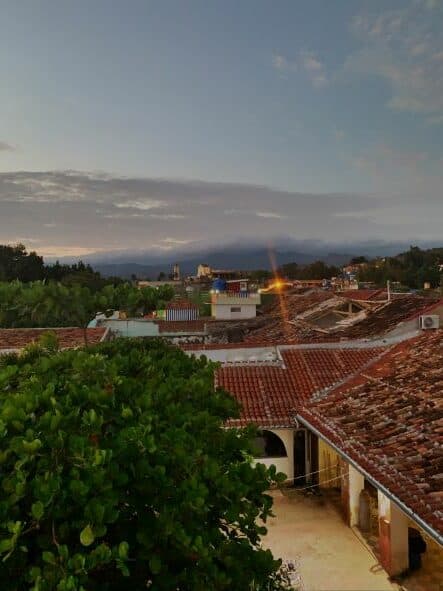
Situated around 300 kilometers from Havana across the island, it is a four to five hours drive from Havana in a taxi privado, and a bit longer by a collectivo or a regular bus.
Trinidad has a population of around 75,000, and its main industries are tobacco processing and a growing tourist industry. The older parts of town are incredibly well preserved, which is why so many travelers love to come here.
There is so much art, history, culture, and adventure waiting to be explored in the region and along Cuba’s southwestern coastline.
Cienfuegos & Bay of Pigs
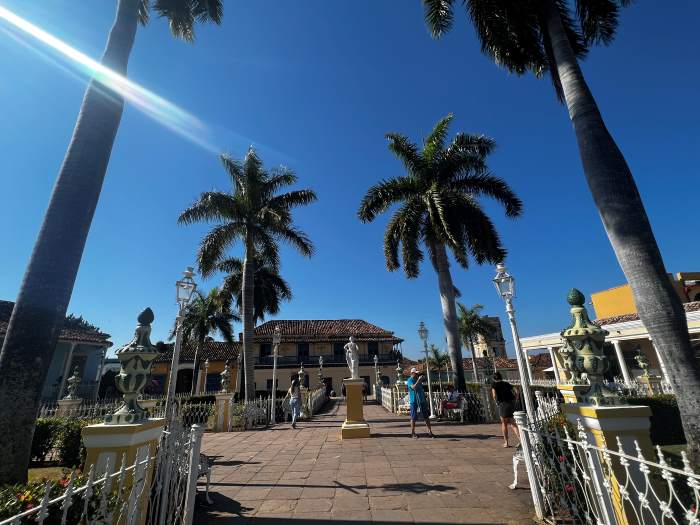
About 80 kilometers west of Trinidad is the city of Cienfuegos. This city is also called La Perla Del Sur (the pearl of the south), as it is considered one of the most beautiful cities in Cuba.
Head another 96 kilometers west, and you reach the Bay of Pigs and Playa Giron, where the failed US invasion took place in 1961.
This was a monumental incident in history that had a huge influence on the relationship between Cuba and the US in decades to come.
Wrap-Up Is Trinidad Cuba Worth Visiting!
One of the most amazing and unique destinations in Cuba you can choose to visit is Trinidad. Don’t miss out on the cobblestoned streets, art, music, history, and everything else Trinidad has to offer.
This snapshot of colonial Cuba will give you an experience you truly can not get anywhere else.
Related blog posts:
Trinidad Cuba Nightlife: Dance The Reggaeton In An Underground Cave!


